Unconventional Content Marketing Strategies for Driving Lead Generation in 2024

If you’re investing your time and energy into producing and sharing compelling content for your business, it’s crucial to ensure you’re doing it effectively—driving traffic, establishing trust with your audience, and even generating valuable leads. The key to achieving these goals is implementing a robust content marketing strategy.
But if you don’t understand content marketing and how it has evolved over the years, you won’t be able to execute a winning strategy successfully.
So, what is content marketing? Content marketing is creating and distributing valuable, relevant, consistent content to attract and retain a clearly defined audience.
The changing landscape of content marketing
The content marketing landscape is constantly changing because of new technologies, the increasing competitiveness of the online space, and the changing expectations of consumers.
Some of the key trends shaping the content marketing landscape in 2024 include:
1. The rise of artificial intelligence (AI)
2. The increasing popularity of video content
3. The importance of personalized experiences
4. The need for quality over quantity
Why traditional content marketing strategies may not be as effective for lead generation in 2024
Traditional content marketing strategies, such as blogging, ebooks, and white papers, are still valuable, but they may not be as effective for lead generation in 2024 as they once were. This is because the content marketing space is becoming crowded and very competitive. People’s attention spans are getting shorter, but their expectations for better content are rising.
The Evolution of Content Marketing
Consumer behavior and technology have evolved rapidly in recent years, necessitating new approaches to content marketing. Consumers now expect more from the content they consume. They want content that is personalized, relevant, and engaging. They also want content that is easy to find and consume on their preferred devices.
A study by Demand Metric suggests that content marketing generates 3x more leads than conventional marketing strategies, while costing 62% less. Here are some examples of conventional content marketing strategies that are now less effective:
a. Mass-produced content: Consumers can spot mass-produced content from a mile away. They want content that is tailored to their individual needs and interests.
b. Promotional content: Consumers are more likely to engage with informative and educational content rather than promotional.
c. Gated content: While gated content can be effective for generating leads, it can also be a barrier to entry for potential customers.
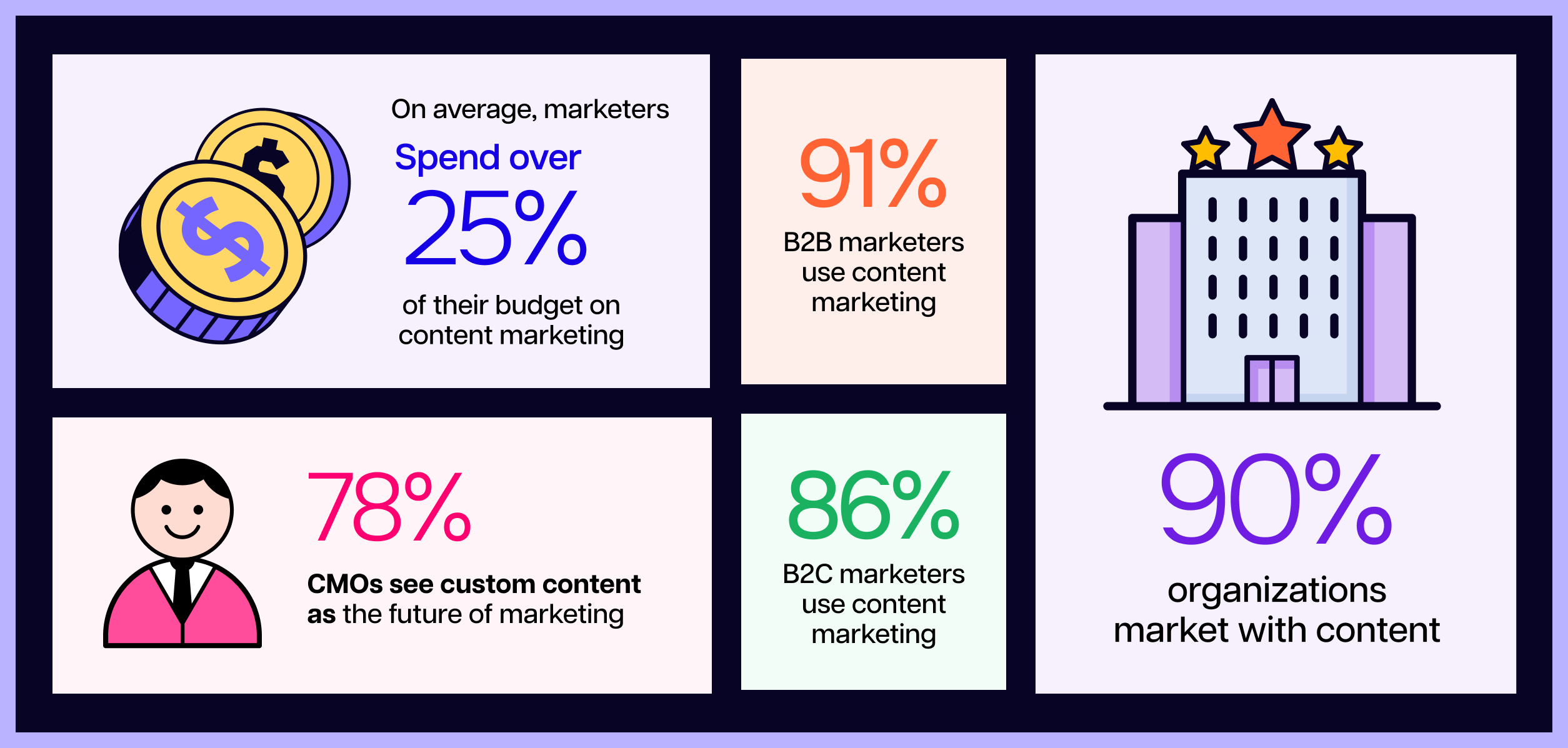
Why Unconventional Strategies?
Every brand today uses similar content marketing strategies. This has made the content landscape crowded, and consumers find it difficult to distinguish one. This makes it difficult to stand out from the crowd. That’s where unconventional content marketing strategies come in. By thinking outside the box and creating unique and unexpected content, brands can capture attention and generate leads in a more competitive environment.
Here are some examples of successful unconventional content marketing strategies:
-
Red Bull created a Stratos space capsule that allowed Felix Baumgartner to skydive from 24 miles above Earth. This stunt generated over 8 million live viewers and billions of media impressions.
-
Adobe created interactive ads for users to create art and music. These ads were highly engaging and generated a significant amount of buzz and social media shares.
-
Dove created a Real Beauty Sketches campaign that featured women describing themselves to a sketch artist. The artist’s sketch was then compared to a photo of the woman taken by a stranger. The results were powerful and showed that women are often too critical of their appearance.
Data also shows the value of “thinking outside the box” or stepping outside the norm:
-
A study by BuzzSumo found that unconventional content formats, such as listicles, infographics, and videos, are more likely to be shared than traditional blog posts.
-
A study by Contently found that interactive content is 50% more likely to generate leads than static content.
-
Social Media Examiner found that brands that use unconventional content marketing strategies are more likely to see increased website traffic, social media engagement, and lead generation.
What unconventional strategies can brands follow for content marketing success?
There are many different ways to use content marketing differently. Let’s check out a few:
1. Leveraging NFTs for Exclusive Content Access
Non-fungible tokens (NFTs) are digital assets that are unique and non-interchangeable. One of the ways that NFTs can be used to generate leads is by providing exclusive access to unique content. For example, a brand could create limited NFT access passes that give holders early access to new products, discounts, or behind-the-scenes content. This is exactly what Belong did! It is the ultimate platform for creating, buying, and selling NFT tickets for events, conferences, concerts, and more. As a Belong Founder NFT holder, you can get early access to the new features and content on the platform. This gives you a competitive edge in the market and allows you to gain more exposure, reach broader audiences, and build your brand online.
Another way to use NFTs to generate leads is by creating gated content that is only available to NFT holders. This could include white papers, webinars, or even private communities.
Here are some real-world examples of how brands are using NFTs to generate leads:
Taco Bell created a collection of NFT tacos that gave holders early access to their new metaverse restaurant.

Nike created a collection of NFT sneakers that gave holders access to exclusive events and products. Similarly, Starbucks created a collection of NFT coffee stamps that gave holders exclusive rewards and experiences.
Actionable steps for using NFTs to generate leads:
-
Identify your target audience and what kind of exclusive content would be valuable to them.
-
Create a limited number of NFT access passes or gated content.
-
Promote your NFT collection to your target audience.
-
Track the results of your campaign and see how many leads you generate.
2. Geo-Localized Storytelling Through AR
Augmented reality (AR) is a technology that superimposes computer-generated images on a user’s view of the real world, thus providing a composite view. AR has the potential to revolutionize hyperlocal marketing by allowing businesses to create immersive and engaging experiences for their customers.
AR can be used for hyperlocal marketing in many different ways:
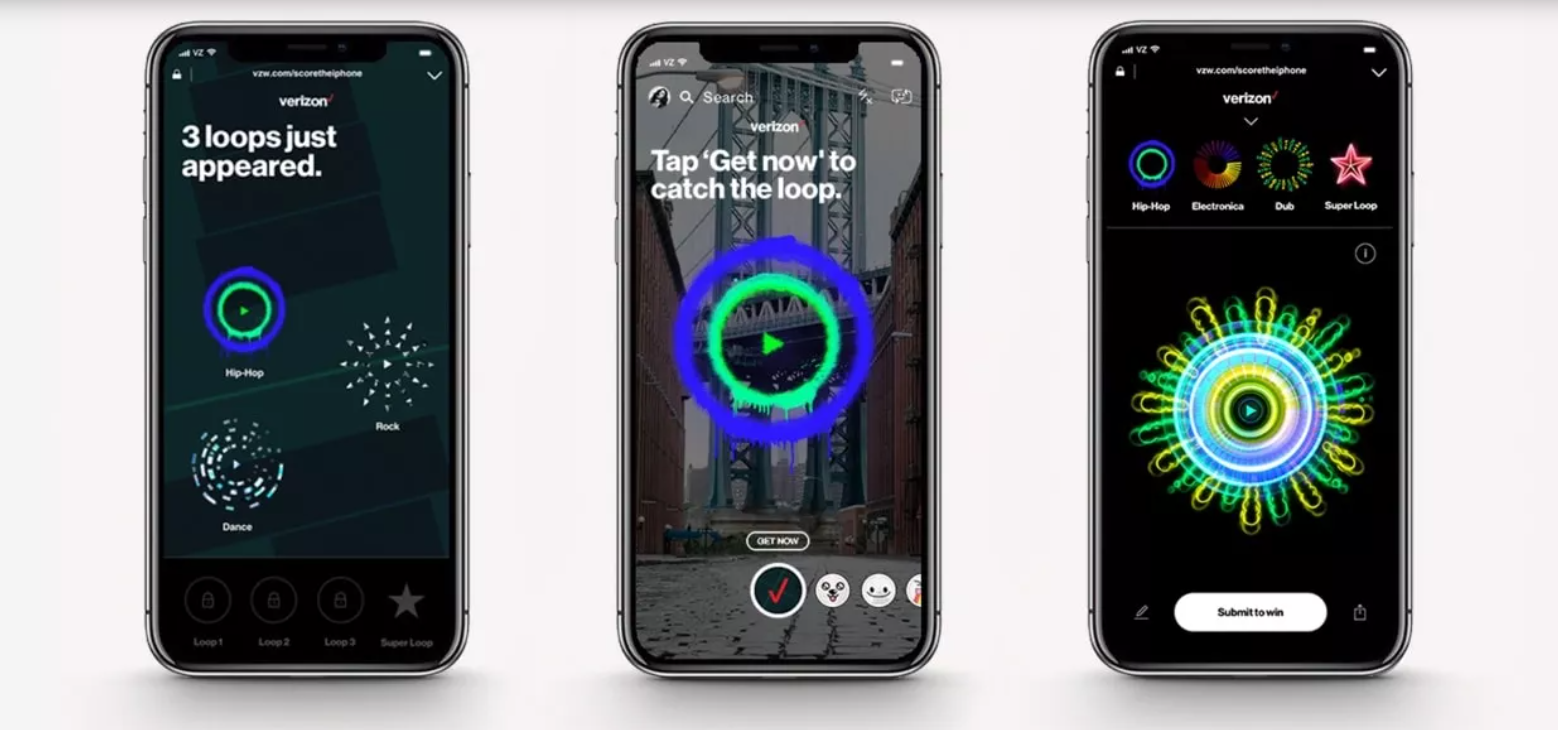
-
Create virtual scavenger hunts or treasure maps to get people exploring your local area. For example, Verizon partnered with Snapchat to create an AR treasure hunt game where users could win iPhones, combining AR with real-time data and geolocation.
-
Offer AR product demonstrations to show potential customers how your products work.
-
Create AR filters and effects for social media to get people talking about your business.
-
Partner with local businesses to create AR experiences relevant to your target audience.
Guidelines for implementing AR for hyperlocal marketing effectively:
-
Make sure your AR experiences are relevant to your target audience
-
Make sure your AR experiences are easy to use
-
Promote your AR experiences on the right channels
-
Track the results of your AR campaigns
3. AI for SEO Content Marketing and Personalization
Artificial Intelligence (AI) significantly enhances content marketing efforts by automating tasks, providing insights, and personalizing content. Here are a couple of things you can do to improve your content marketing efforts by using AI:
AI tools like OpenAI’s GPT-3 can generate human-like content, helping to create blog posts, articles, product descriptions, and more.
Chatbots are great at mimicking human-like conversations, giving a personal touch to the interactions with the visitors on your website. Beyond their conversational abilities, they serve as valuable tools for gathering data on site visitors. This data can help you better understand your audience’s preferences and interests, ultimately personalizing the content and experiences that resonate most with them.
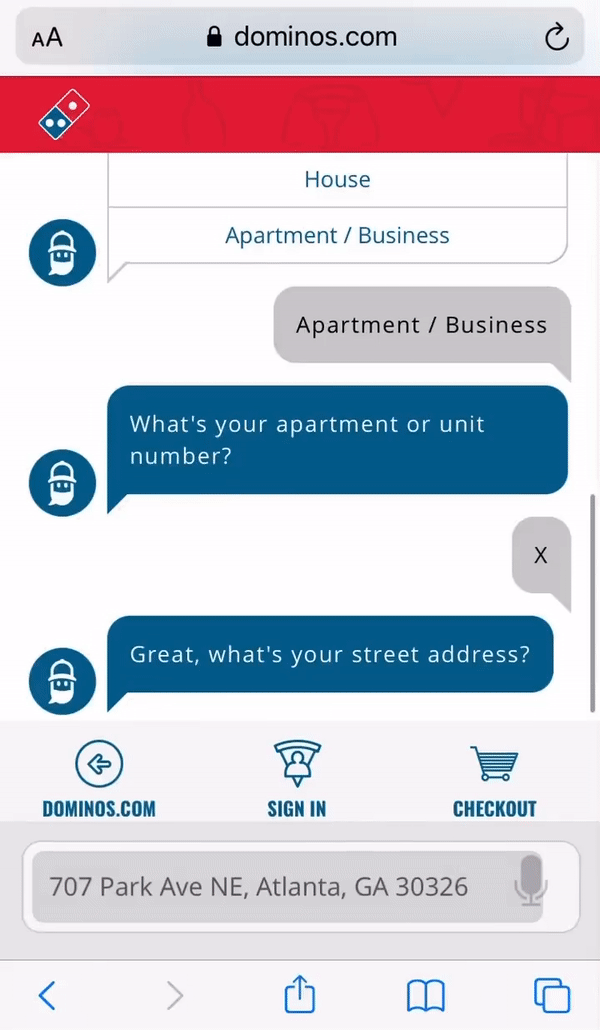
Domino’s has seamlessly integrated a chatbot named Dom into both Messenger and its website, embodying the brand’s distinctive voice. Dom goes beyond the conventional by providing customers with a streamlined ordering experience directly within the chat interface. This innovative approach simplifies purchasing a favorite pizza and showcases how a chatbot can enhance mobile interactions, especially on social platforms.
AI can also analyze user data to create personalized email campaigns with tailored content and offers. This approach can predict the likelihood of user engagement and optimize email campaigns accordingly.
In another example, a social media content influencer built an online business from scratch using ChatGPT. In April 2023, a TikToker named Thunder Keck released a video asking the AI tool to make him a business. The AI created a dropshipping business for workout supplements called ‘Enerjuice’, which became functional within 45 minutes with its pricing strategies. Moreover, the tool suggested a content marketing strategy to leverage social platforms and invite the audience to collaborate on designs by offering design prompts.
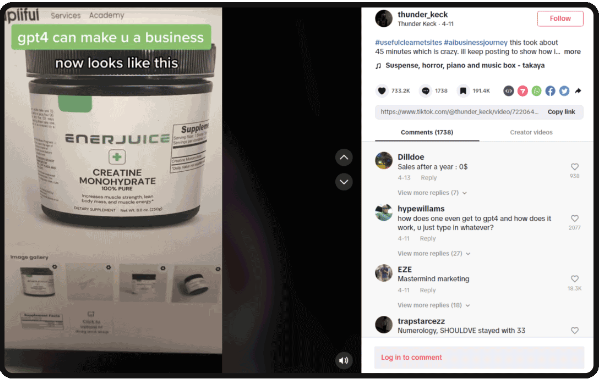
Here are a few smart tips to remember while using AI for content marketing efforts:
-
Inject a touch of human creativity and review AI-generated content to ensure it aligns with your brand’s unique voice and resonates with your audience.
-
Don’t hesitate to experiment with different AI tools and strategies.
-
Keep yourself updated on the latest advancements in AI technology.
-
Find the right balance between automated processes and personalized content. Use AI to streamline tasks, but ensure your content remains tailored to individual preferences for a more engaging user experience.
4. Guerrilla Social Listening for Real-Time Content Creation
Content visibility algorithms have changed. You must host conversations about current topics and trending concerns. If you are a tech blogger and you haven’t voiced your opinion about the advancements in Android, it will hit your ranking.
Social listening is critical to gaining an understanding of the latest topics. Guerrilla social listening can help you capitalize on emerging trends and convert real-time topics into conversion opportunities.
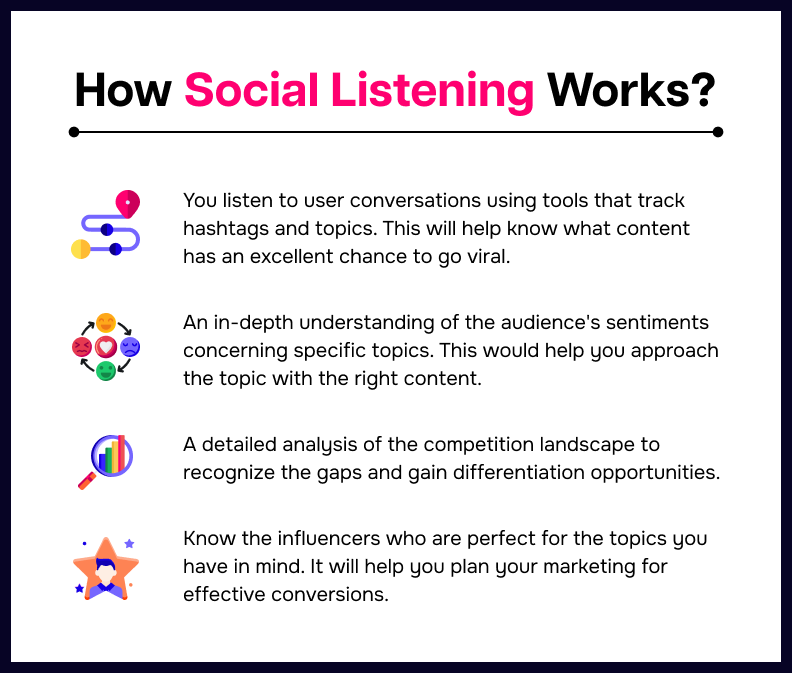
Top Tools to Improve Social Listening
If you want to charge your content marketing with the guerrilla social listening strategy, you must use these tools.
-
Brandwatch and Hootsuite are great social listening tools that allow you to monitor audience sentiment.
-
You can use Google Alerts to determine the keywords or relevant topics that users in your niche search for
-
Use tools like RiteTag or Hashtagify to monitor trending hashtags and know more about current topics.
-
You can use influencer marketing platforms to collaborate with influencers and improve brand collaborations.
-
Feedly is a great way to track the latest news in your industry. It can help you create compelling content pieces.
5. Ephemeral Content for Urgency-Based Lead Gen
When you create a sense of emergency among your audience, you can improve lead generation. The ephemeral content strategy uses content like Facebook or Instagram stories to create urgency. The limited access can help pique the user’s interest and drive more engagement.
How does Ephemeral Content help?
-
Limited availability of the content ensures fear of missing out on important information. This will drive more visits to the content and eventually improve conversions.
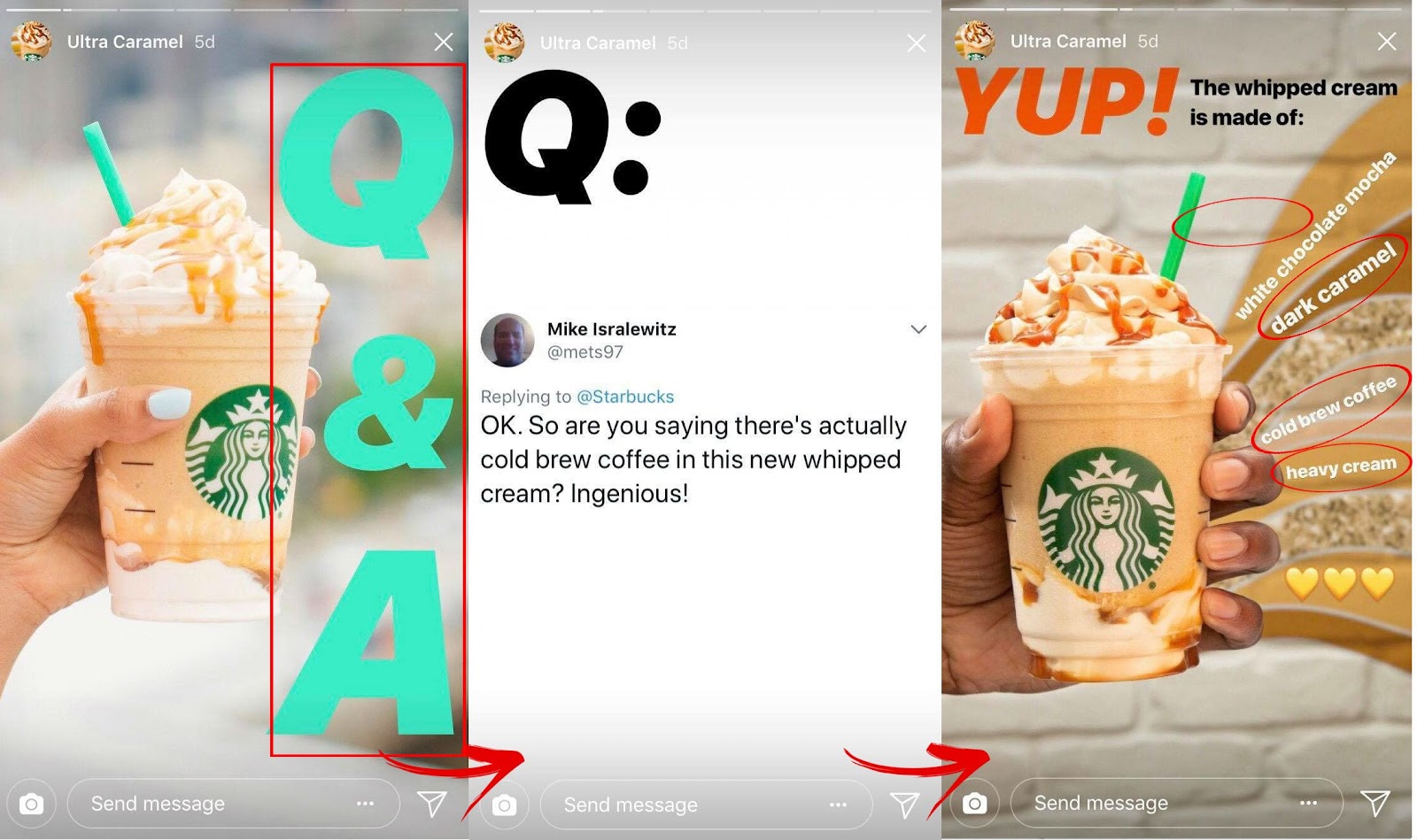
-
It increases the real-time engagement of users with brands. When you connect with users at the moment, it translates to conversions.
-
You can follow a sequential format to build a story that compels users to participate and engage with the content.
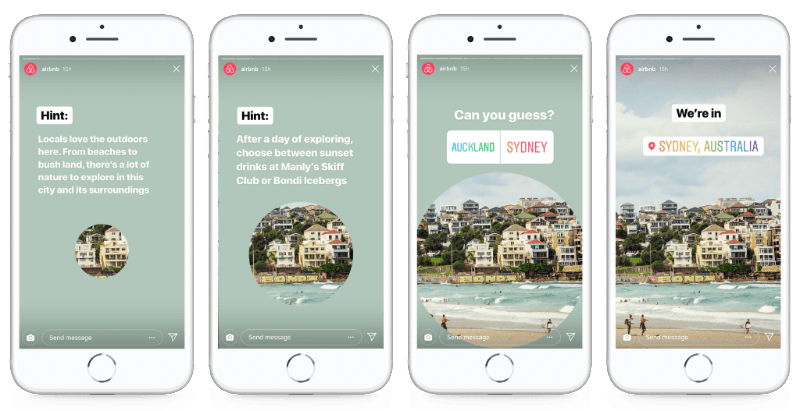
Ensuring Success with Ephemeral Content
-
A consistent posting schedule is crucial to keep your users engaged with the copy.
-
It is essential to be authentic with your content to increase an emotional connection with the users.
-
Keep track of the performance metrics to know if your content strategy is performing well.
How do we measure the outcome of these unconventional strategies?
While creating unconventional strategies for better use of content marketing may not be very difficult, measuring their results can require some work. The usual evaluation parameters may not be helpful here because they might not match the “newness” of unconventional strategies. However, some KPIs work well for unconventional approaches. These include:
1. Reach: The number of people who have seen your content
2. Engagement: How people interact with your content
3. Leads generated: Number of leads that were generated from your content
4. Sales generated: Amount of sales that were generated from your content
You can also use the following tools to analyze unconventional content marketing campaigns:
1. Social media analytics tools
2. Website traffic analytics tools
3. CRM software to track and manage leads and customers
4. E-commerce analytics tools
Risks of unconventional content marketing and how to manage them
Unconventional content marketing strategies can offer great rewards, but they also come with risks. Before launching any unconventional campaign, it’s important to acknowledge and mitigate these risks to protect your brand reputation.
Here are some of the most common risks:
1. Offending your target audience if your strategy is too edgy or controversial
2. Backlash from social media that could damage your brand.
3. Legal liability if your strategy involves any questionable or illegal activities
Here are some tips for testing unconventional content marketing strategies safely:
1. Start small: Don’t launch a full-scale unconventional campaign right away
2. Beta testing: Get feedback from a small group of beta testers
3. Monitor your results closely: Once your campaign is live, monitor your results closely
4. Have a backup plan in case your unconventional strategy goes wrong
So What This Means For You?
Unconventional content marketing strategies can be a powerful way to drive lead generation in 2024. By thinking outside the box and creating content that is truly unique and engaging, you can stand out from the competition and attract the attention of your target audience.
However, it’s essential to know the risks associated with unconventional content marketing strategies. Before launching any unconventional campaign, be sure to acknowledge and mitigate these risks to protect your brand reputation.
If you are looking for high-quality content that drives leads, don’t forget to check out Pepper’s Content writing services.
Latest Blogs
Learn how to rank on AI search engines like ChatGPT, Perplexity, and Gemini by optimizing your content for authority, structure, and relevance. Stay ahead in AI-driven search with this strategic guide.
Explore the best healthcare SEO services for your medical practice. Improve online visibility and effectively reach more patients in need of your services.
Discover top social media agencies specializing in banking solutions, enhancing financial services and driving engagement.
Get your hands on the latest news!
Similar Posts

Demand Generation
8 mins read
Mastering the Art of Building an Effective Content Marketing Funnel in 2024

Demand Generation
6 mins read
Fueling Demand Generation: How Buyer Personas Catapult Your Content Marketing Strategy

Demand Generation
8 mins read